Bart Bruni
Level 1 Thermographer #6455
Bestec Home Inspections
323 SE First AvenueHallandale Beach, FL 33009Ph: 954-458-5357 www.bestechomeinspections.com
Abstract
Pest thermography is a new and growing application. Over the last five years, improvements have been made with respect to inspection methods and technologies. This has created a new foundation for IR pest inspections called “Integrated Pest Thermography” or IPT. This paper will briefly review some of the IPM methods used in IR pest inspections and how infrared pest inspections have been refined and integrated with inspection techniques from other industries.
Introduction
What is pest control? “Pest control refers to the regulation or management of a species defined as a pest, usually because it is perceived to be detrimental to a person’s health, the ecology, or the economy. Pest inspections are conducted by individuals licensed to perform inspections of building structures to determine damage or possibility of damage from insects, bugs, termites or dry rot conditions.”
How important is pest management? It has been said that only ninety days without any form of pest management on earth would trigger a chain of events that would have catastrophic consequence for mankind. This would have a devastating effect on our water and food supply, the ecology, numerous health issues, and the global economy.
Integrated Pest Management (IPM) method is widely used in pest management. IPM defined in just a few words is “find the pests source” and eliminate it, opposed to treating baseboards in structures that harbor live pest infestations. Standard baseboard applications are control strategies, designed to control pest populations coming from the source.
Integrated Pest Thermography or IPT has the same primary objective as the IPM method, “find the pests source”. Deeper inspection results in more accurate data, which then allows the pest operator to locate more sources. IR pest inspections are at the forefront of hi-tech pest inspections for a good reason, thermal mapping is a great way to find the source of pest infestations. The IPM combined with IPT can find nesting sites and/or elements that the target pest needs, such as water or heat. Together they provide a great methodology to use as a foundation for pest management operators’ remediation strategies.
Some basic information about your targeted pest prepared prior to a pest inspection, will help decipher the maze of possibilities of where that source could be.
Pest Biology
There are advantages to studying the anatomy of insects. Mouth parts, body temperature, digestive system, size, and fecal matter. This information helps you track down your target pest.
Reproduction
The IPM method of performing pest inspections requires that you seek out the nest or source of the pest problem. Therefore, environmental conditions necessary to reproduce, nest or colonize are important facts you should know prior to your inspection.
Pest ID
In pest control inspections it is not enough to find an insect. You must also identify your target pest’s evidence. You need to know its proper and / or common name, what species it is and what variety of that species it is to make an accurate identification of an insect. To do so, you must know the color, markings, shape and amount of body parts, and / or antenna shape, of your target pest. This information is easily accessible over the internet.
Pest Behavior
Insect behavioral patterns can lead you to areas where your target pest is nesting or working. An example of some types of information that will be helpful is feeding behavior; what does the target pest eat, and when? Also, how far do they forage for food? What are the reproductive rituals? What is used for nesting materials and how do they gather it? All of the above can be of great value.
Pest Thermal Signature
 A productive IR scan, or thermal mapping with other thermal devices such as an infrared radiometer and knowing the anatomy of your target pest, will tell you whether you’re looking for a thermal signature that is hot, cold, or both. Also, the specific conditions and temperature during your inspection can affect an insect infestation’s thermal signature. It is advisable to seek out and study target pest thermal signatures prior to your inspection if possible. I have included some of the more popular pest thermal signatures in this paper for your review. See Below.
A productive IR scan, or thermal mapping with other thermal devices such as an infrared radiometer and knowing the anatomy of your target pest, will tell you whether you’re looking for a thermal signature that is hot, cold, or both. Also, the specific conditions and temperature during your inspection can affect an insect infestation’s thermal signature. It is advisable to seek out and study target pest thermal signatures prior to your inspection if possible. I have included some of the more popular pest thermal signatures in this paper for your review. See Below.
Pest Damage: Economic Impact on the Property Owner
The end user’s expectations are very important to the success of the inspection and earning future business. Cooperation from the property owner is your best asset. In the case of termite, spider, bee, rodent, and fire ant infestations, these pests not only present economic losses, there are also health and safety issues. Communicating to the end user what to expect from your inspection and how that will lead to the results they are seeking is very important. Identifying infested building components and selecting which of those components that your target pest can cause economic damage to is critical information to the property owner and the pest operator. Communicating realistic expectations is important; however, choosing your words carefully is even more important.
Five tips in being a great Infrared Pest Inspector are:
- Become a certified pest thermographer
- Practice within the “Standard for Infrared Inspections to Detect Pests, and Pest Related Damage” written by Infraspection Institute
- Practice IPT (Integrated Pest Thermography) as described in this paper
- Stay informed by way of the internet, papers, articles, seminars, short courses, and your peers. Stay current with real time information on the inspection related subject matter from other industries
- Always report useful, accurate information that will be beneficial to the end user or their agent, such as the licensed pest company
Types of Non-Destructive
Pest Inspection Tools and Technologies
IR Imager
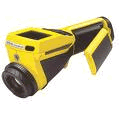 The heat patterns of subterranean termite nests or areas where other pests harbor can be detected by IR imagers. The change in thermal patterns on surfaces such as ceilings, walls, or floors can be helpful in finding the source of the infestation as well as conditions that pests need to infest. This helps to locate pest infestations and helps with documenting the results of a pest operator’s treatment. IPT methods deals with close to ambient temperatures most of the time. The IR signature of an infestation is cold due to evaporation of the moisture thatthe pest has brought into the structure or it could be hot if you are viewing a nest containing millions of bees. Sometimes IR pest signatures are both hot and cold. As seen Below.
The heat patterns of subterranean termite nests or areas where other pests harbor can be detected by IR imagers. The change in thermal patterns on surfaces such as ceilings, walls, or floors can be helpful in finding the source of the infestation as well as conditions that pests need to infest. This helps to locate pest infestations and helps with documenting the results of a pest operator’s treatment. IPT methods deals with close to ambient temperatures most of the time. The IR signature of an infestation is cold due to evaporation of the moisture thatthe pest has brought into the structure or it could be hot if you are viewing a nest containing millions of bees. Sometimes IR pest signatures are both hot and cold. As seen Below.
Field of view and/or direct line-of-sight can be a negative issue with IR pest inspections. Areas like bathrooms, closets, and other small areas where direct line-of-sight cannot be obtained properly. Cross inspecting with other detection devices is necessary, just your IR imager is not enough.
IR and Termite Detection Dogs
 To understand how a dog sniffs: from a single drop of urine, the sniffing dog learns the marking pest’s sex, diet, health, emotional state, and even whether it’s dominant or submissive, friend or foe. Tracking dogs follow a biochemical trail of dead skin cells, sweat, odor molecules, and gases. For dogs, a scent article is like a three-dimensional “odor image” much more detailed than a photograph is for a person. Dogs can track a scent through snow, air, mud, water, and even ash.
To understand how a dog sniffs: from a single drop of urine, the sniffing dog learns the marking pest’s sex, diet, health, emotional state, and even whether it’s dominant or submissive, friend or foe. Tracking dogs follow a biochemical trail of dead skin cells, sweat, odor molecules, and gases. For dogs, a scent article is like a three-dimensional “odor image” much more detailed than a photograph is for a person. Dogs can track a scent through snow, air, mud, water, and even ash.
The properly trained and certified detection dog is recognized in court as a “scientific instrument” (US 9th Circuit Court of Appeals).
Dogs are great partners in pest inspections, however, you must be willing to be tolerant of an in house pest dog’s habits. It’s not all fun and games – there are the normal pet chores. To keep these working dogs on task, the dog’s daily training must be recorded. Documenting your pest dog’s performance & accuracy is necessary.
IR and Gas Detectors
 When tracking down termites with a conventional gas detector beware – an increased chance of false positive reading is likely. Methane gas is the most common gas to be detected by a termite gas detector. Tests show mixed results for accuracy on conventional methane gas detectors in termite inspections.
When tracking down termites with a conventional gas detector beware – an increased chance of false positive reading is likely. Methane gas is the most common gas to be detected by a termite gas detector. Tests show mixed results for accuracy on conventional methane gas detectors in termite inspections.
Another type of gas that termites produce is CO2, more CO2 than all other living things combined. Termites produce this amount of carbon dioxide from their digestion of wood. The CO2 Termite Detector does not give as many false alarms, works instantly, and only detects active termites.
Some pest inspectors live with having to decipher false positive readings from conventional gas detectors, as opposed to living with a termite detection dog and all that it entails. You do not need both a dog and gas detector. However, dogs are the #1 scent pest driven detectors.
IR and Sound
 You can sometimes hear termites with the naked ear, why? You hear the termites pull the fibers from the wood and the banging of the soldier termites’ heads on the wood. Sound is effective in pest inspections in general, i.e., rodents, critters, ants, roaches, termites and bees. Advanced and sensitive acoustic detection systems are available for locating termites and hidden pest infestations in wooden structures, trees, plants, and soil. Here is how it works: “Acoustic emission apparatus methods for detecting termite infestation including a probe and signal processing circuitry”. The probe includes a piezoelectric transducer and is adapted to be inserted into a bore-hole of the wood under test. The waveguide intersects the high frequency extensional and shear waves produced by feeding and movement of termites propagating along the grain of the wood. The transducer output signal is filtered through high (HF) and low (LF) bandbase filters. Selected HF/LF values produce a signal which substantially eliminates extraneous out-of-plane acoustic noise. One embodiment includes a multiple channel multiplexing system for monitoring insect treatment processes in structures such as homes and other buildings. The real time data is used to determine the effectiveness of treatments as well as the time required to produce an effective treatment for termite eradication. Sound detectors are low on the destructive scale. A probe needs to penetrate the surface to get the best signal.
You can sometimes hear termites with the naked ear, why? You hear the termites pull the fibers from the wood and the banging of the soldier termites’ heads on the wood. Sound is effective in pest inspections in general, i.e., rodents, critters, ants, roaches, termites and bees. Advanced and sensitive acoustic detection systems are available for locating termites and hidden pest infestations in wooden structures, trees, plants, and soil. Here is how it works: “Acoustic emission apparatus methods for detecting termite infestation including a probe and signal processing circuitry”. The probe includes a piezoelectric transducer and is adapted to be inserted into a bore-hole of the wood under test. The waveguide intersects the high frequency extensional and shear waves produced by feeding and movement of termites propagating along the grain of the wood. The transducer output signal is filtered through high (HF) and low (LF) bandbase filters. Selected HF/LF values produce a signal which substantially eliminates extraneous out-of-plane acoustic noise. One embodiment includes a multiple channel multiplexing system for monitoring insect treatment processes in structures such as homes and other buildings. The real time data is used to determine the effectiveness of treatments as well as the time required to produce an effective treatment for termite eradication. Sound detectors are low on the destructive scale. A probe needs to penetrate the surface to get the best signal.
IR and Radiometric Devices
 I refer to the Infraspection 2008 edition of the Standard for Infrared Inspections to Detect Pests, and Pest Related Damage: “8.3.2: In order to detect pests directly, a direct line-of-sight is required between the imager and the subject pest. 8.3.2.1 Line-of-sight must be free of any obstructions, including glass or plastic.”
I refer to the Infraspection 2008 edition of the Standard for Infrared Inspections to Detect Pests, and Pest Related Damage: “8.3.2: In order to detect pests directly, a direct line-of-sight is required between the imager and the subject pest. 8.3.2.1 Line-of-sight must be free of any obstructions, including glass or plastic.”
In cluttered areas that do not qualify for thermal imaging, spot temperature measurements can be the way to get data beyond a visual pest inspection. An IR imager combined with a spot measurement radiometer will improveaccuracy and provide a more thorough overall inspection. This will expand the depth of your inspection and provide a thermal map that can be useful in the total scope of the inspection and can lead you to live pest infestations.
IR and Visual Inspection
 With qualified pest management professionals there are over forty areas to inspect for pests. The first rule of visual inspection is to know your target pest. Design an inspection protocol such as inspecting each area clockwise or counterclockwise from the entranceway; this is so you will be consistent in gathering data in the same way. Use the pest control operator’s protocol standard for pest inspections for the visual portion of an IPT inspection. Create a graph of the property and denote the areas that have live pests or areas that have elements that can support a pest nesting site. Also identify areas where IR or other technologies would provide useful data so that you can revisit and test the areas when the visual inspection has been completed.
With qualified pest management professionals there are over forty areas to inspect for pests. The first rule of visual inspection is to know your target pest. Design an inspection protocol such as inspecting each area clockwise or counterclockwise from the entranceway; this is so you will be consistent in gathering data in the same way. Use the pest control operator’s protocol standard for pest inspections for the visual portion of an IPT inspection. Create a graph of the property and denote the areas that have live pests or areas that have elements that can support a pest nesting site. Also identify areas where IR or other technologies would provide useful data so that you can revisit and test the areas when the visual inspection has been completed.
IR and Fiber Optic Scopes
 This method is very low on the destructive scale as with respect to non-destructive inspection procedures; however, when visual proof is necessary fiber optics are the least destructive. Also, with some minor adjustment you can integrate video and or photos to document your findings and share the data with the principals that are off site.
This method is very low on the destructive scale as with respect to non-destructive inspection procedures; however, when visual proof is necessary fiber optics are the least destructive. Also, with some minor adjustment you can integrate video and or photos to document your findings and share the data with the principals that are off site.
IR and Moisture Meters
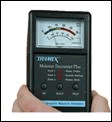 The two major classes of electric moisture meters are the conductance (resistance) type and the dielectric type. Conductance-type meters use penetrating electrodes that measure in a small volume, so moisture gradients may be reduced by repeated measurements at increasing depths. Dielectric-type meters use surface electrodes that do not puncture the wood surface, and can measure the moisture content of relatively dry wood. I have found that both types should be in my tool box.
The two major classes of electric moisture meters are the conductance (resistance) type and the dielectric type. Conductance-type meters use penetrating electrodes that measure in a small volume, so moisture gradients may be reduced by repeated measurements at increasing depths. Dielectric-type meters use surface electrodes that do not puncture the wood surface, and can measure the moisture content of relatively dry wood. I have found that both types should be in my tool box.
Readings of moisture meters are affected by such factors as wood species and temperature, chemical treatments, moisture distribution. Other ways meter readings can be influenced is by the contact of the electrodes with the specimen, orientation of the electrodes relative to specimen grain, topical treatments used to preserve specimens such as finishes, weather conditions, and skill of the operator.
IR and Movement Detectors
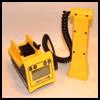 Termatrac is a breakthrough development in the detection of termites, invented and developed in Australia using technology similar to radar. Termatrac is designed to detect pest movement through timber, plasterboard, brick, or masonry. Termatrac coupled with a visual inspection, IR imager, moisture meter, acoustical or gas emissions test, provides multiple ways to quantify your findings.
Termatrac is a breakthrough development in the detection of termites, invented and developed in Australia using technology similar to radar. Termatrac is designed to detect pest movement through timber, plasterboard, brick, or masonry. Termatrac coupled with a visual inspection, IR imager, moisture meter, acoustical or gas emissions test, provides multiple ways to quantify your findings.
IR and Documentation Techniques
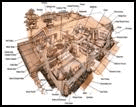 There are over forty areas to inspect a property for pests. Recording your findings is a very important task in performing inspections and reporting accurately. Prepare pre-inspection forms geared to recording pertinent data. It is helpful for the IR pest inspector to have a baseline of data so that qualitative evaluations can be made about any anomalies whether they are new or old.
There are over forty areas to inspect a property for pests. Recording your findings is a very important task in performing inspections and reporting accurately. Prepare pre-inspection forms geared to recording pertinent data. It is helpful for the IR pest inspector to have a baseline of data so that qualitative evaluations can be made about any anomalies whether they are new or old.
Here are some techniques used in IPT: Prepare a list of words and keep them handy so that you can use that list as a tool box to pick from when documenting data. The primary goal in documenting your inspection is being accurate. An example is: often in cases where monitoring an infestation is necessary and when using equipment that provides readings, I record the test results on my company work order; however, for important details I use as ultraviolet pen in the field on the areas where recordable data is found. I am referring to areas such as walls, ceilings, and floors. I record data in exactly the same spotwhere I took my last reading. When I return for the next inspection in about 90 days, the last reading is waiting for me in exactly the same spot. A small ultraviolet light is necessary to see the reading. This ensures accurate readings for monitoring infestations. A word of caution; ask the client’s permission to record pest inspection data in this manner before doing so.
work order; however, for important details I use as ultraviolet pen in the field on the areas where recordable data is found. I am referring to areas such as walls, ceilings, and floors. I record data in exactly the same spotwhere I took my last reading. When I return for the next inspection in about 90 days, the last reading is waiting for me in exactly the same spot. A small ultraviolet light is necessary to see the reading. This ensures accurate readings for monitoring infestations. A word of caution; ask the client’s permission to record pest inspection data in this manner before doing so.
So what are we looking for and how do we find it? You’re looking for live pest infestations or conditions that will support nesting sites. The best way to find them is by crossing methods and technologies that provide valuable and accurate data. You need several technologies to receive accurate, quantifiable data. Also you will need a priority list of equipment with respect to what works best together on any given pest.
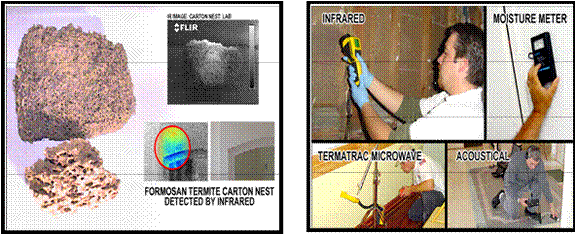
Below are some tried and true combinations of inspecting with the above mentioned technologies, so that we may achieve better results in finding the sources of pest problems. Find the evidence, find the nest, find the entry point. This is what an IPT inspection is all about.
Cross Index of Technology to use
with IR Pest Inspections
|
Target Pest |
Type of Inspection and Thermal Signature |
IPT Tool Combos in the Order |
| Ants | Interior cold |
Visual inspection, acoustical testing, motion detector, moisture meter, fiber optic scope |
| Roaches | Interior hot |
Visual inspection, motion detector, IR imager, moisture meter, fiber optic scope, acoustical testing |
| Spiders Post treatment | Interior cold |
Visual inspection, motion detector, fiber optic scopes, IR imager |
| Silverfish and crickets | Interior cold |
Visual inspection, IR imager, moisture meter, motion detector, fiber optic scopes, radiometer |
| Bed Bugs | Interior N/A |
Visual inspection, dog inspection, motion detectors, fiber optic scopes |
| Rodents | interior / exterior hot |
Visual inspection, IR imager, radiometer scan, motion detector, acoustical testing, fiber optic scope, moisture meter |
| Subterranean termites and damp wood termites | interior / exterior / nest cold / cold / hot |
Visual inspection, IR imager, moisture meter, radiometer scan, dog inspection, motion detector, acoustical testing, fiber optic scope |
| Dry wood termites | Interior / using air to excite the target to document DWT damage cold |
Visual inspection, dog inspection, motion detectors, moisture meter, acoustical, fiber optic scopes, IR imager |
| Bees and wasps | interior / exterior hot / hot |
Visual inspection, IR imager, radiometer, motion detectors, acoustical, fiber optic scope |
Thermal Signatures
Bee Hive
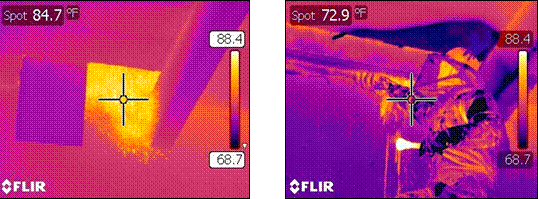 |
|
|
Bees present a hot IR signature |
Bee hives provide a good Delta-T |
Subterranean Termite Nest
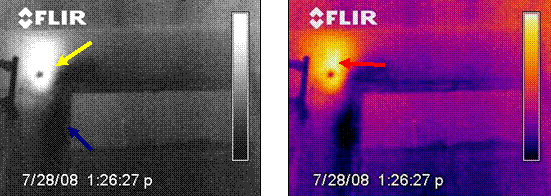 |
| Subterranean termite carton nests in the wall containing millions of termites; at the center it is hot. However, around the nest it is cold. The termites are metabolizing, creating heat in the nest, the cold area is the termites’ entrance and exit. In this case, the termites are bringing moisture up to the fourth floor to support the nest. There is also a warm area in the center of the hot spot. This would be the queen’s chamber, information vital to the success when removing one of these nests. |
Rodents
 |
| Rodents are warm blooded; therefore, a hot thermal signature is what we find. The cold signature is moisture on the wall. |
Drywood Termite Damage
(post treatment)
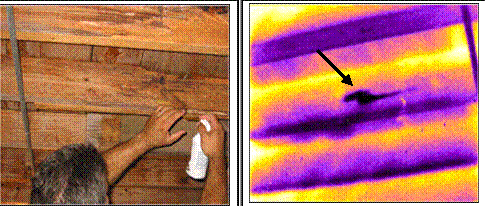 |
|
Initiating active cooling to enhance dry wood termite gallery |
Black Widow Spider
(post treatment)
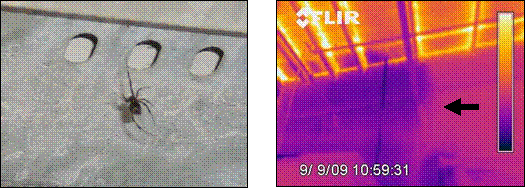 |
|
Black widow spider post treatment images show even coverage of insecticide on the wall. |
Roach (post treatment)
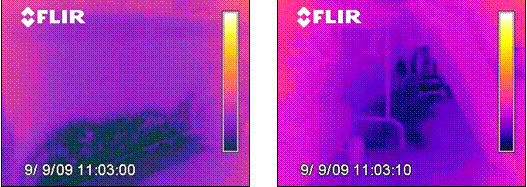 |
|
|
Post roach treatment images |
IR provides accurate insecticide |
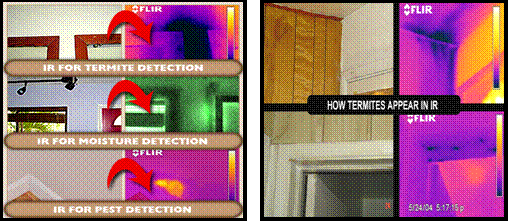
The two images above are used in advertising to illustrate pest thermal signatures
Pest operators have a responsibility to correct or prevent pest infestations in the least amount of time possible, with minimum environmental impact. Regardless of how much training, expertise or equipment, the simple fact of the matter is there is no way to see fully inside walls, underneath floor coverings, behind clutter, beyond insulation, etc.
With all of these inaccessible areas, hi tech inspections by Pest Operators & Pest Thermographers, is the only alternative to ensure an accurate pest inspection. Inspections that are thorough enough to give a Pest Operator useful data beyond the visual inspection will help to correct or prevent pest infestations quickly and with minimal environmental impact.
I wrote this paper to share a variety of methods and technologies I have had success with in the field as a Pest Operator and Pest Thermographer practicing IPM and IPT. My hope is that this information will help you move forward performing great pre-treatment and post treatment IR pest inspections opposed to just good ones.
References
All the information necessary to fact find the above mentioned pest inspection is accessible on the web.
“Standard for Infrared Inspections to Detect Pests and Pest Related Damage” Infraspection Institute, New Jersey
“Issues Associated with the Use of Infrared Thermography for Experimental Testing of Insulated Systems” Brent Griffith, Fred Beck, Dariush Arasteh, and Daniel Turler,
Lawrence Berkeley National Laboratory, University of California, Berkeley, CA
About.com
Bee hive images taken by: Geary Morris, Level 2 Certified Infrared Thermographer
Rodent image taken by: Jon Grossman, Certified Infrared Thermographer
Rodent damage to insulation image taken by: Homesafe
wikipedia.org: definition for pest control
“Ability of Canine Termite Detectors to Locate Live Termites and Discriminate Them from Non-Termite Material”, Shawn E. Brooks, Faith M. Oi, Philip G. Koehler,
Department of Entomology and Nematology, University of Florida, Gainesville, FL
“The Mallis Handbook of Pest Control”, Arnold Mallis. This is the leading reference book for the pest industry.



